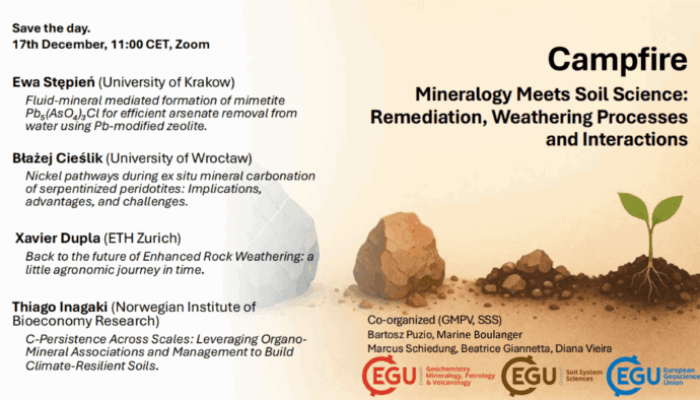How do minerals shape the future of soils, and how do soils drive mineral transformations? This campfire highlights remediation strategies, contamination hazards, and mineral–soil interactions that control water quality, carbon storage, and ecosystem health. Join us on Wednesday, December 17th @ 11 am CET to explore how weathering, organo-mineral processes, and innovative approaches help tackle po ...[Read More]
THE CHALLENGES OF DATING – GEOLOGISTS’ VERSION (part two)
Whether the first four robust candidates for the love of your (geological) life did not match your expectations (if you missed part one, check it here) or you are feeling polyamorous looking for some other options and perspectives, other bachelors/bachelorettes datable phases can be everything you have been looking for. Here are some other minerals used in geochronology, as if they were featured ...[Read More]
THE CHALLENGES OF DATING – GEOLOGISTS’ VERSION (part one)
When it comes to dating profiles, minerals can put up a really good face at first. But, as some of the users in dating apps out there, they might not be worthy of a second try, or maybe not even of a first depending on what your intentions are… To help out, we will tackle some of the main minerals used in geochronology, as if they were featured on online dating apps, plus some ‘red flags’ from pre ...[Read More]
Elemental etymology – what’s in a name?

Like many scientists in the GMPV sphere, I work a lot with geochemistry – using chemical elements and their differing behaviours, abundances or isotopes as tools to understand Earth processes. While staring at the periodic table, something that’s always niggled at me is where the names of these come from: why is the stuff we breath called oxygen and the sand on the beach made of silicon? Even more ...[Read More]



